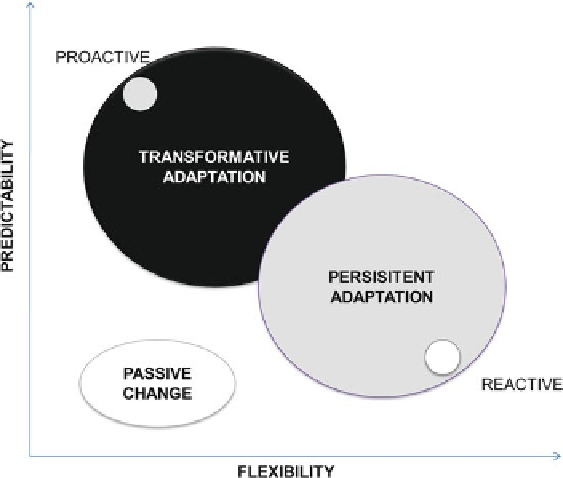Environmental Engineering Reference
In-Depth Information
Fig. 14.1
Balancing out the core tension (flexibility and predictability) in order to generate both
proactive (longer term preparedness to climate change impacts) and reactive (flexibility and quick
reactions to climate events) adaptive capacity
14.1.1
Regime
Certainty and the rule of law are fundamental in a governance system to ensure
governments are subject to the law, providing trust in their rule, predictability in
planning decisions and security in longer term investment (Cosens
2010
; Craig
2009
; Ebbesson
2010
; Ruhl
2009
) .
Regime
indicators represent the elements of the
system that provide this level of predictability to guide the actions of institutions
and individual actors in managing water resources. The legal and property rights
framework is crucial for specifying ownership and use of water resources as well as
the rules and regulations that determine the management of the water resources,
which water rights owners must follow.
Regime
indicators of
ownership
and
respon-
sibility
are important in clarifying the rules that denote rights, duties, privileges,
power and responsibility (Ebbesson
2010
) that impact how an SES is managed.
Within the Swiss case, federal and cantonal legislative provisions that provide
the duties of ecological integration in spatial planning and integrated flood manage-
ment are driving forces behind the transformative elements of the TRC (Fig.
10.2
,
Box
10.1
). Furthermore, the subsidy mechanisms in the NFA for beneficial ecoligical
outcomes and participatory approaches to commune level projects are also associ-
ated with more transformative approaches. On the other hand, in the Swiss case, the
length of legal certainty bestowed upon the hydropower concessions as well as
legislated priorities for irrigation within cantonal legislation, locks in set water

Search WWH ::

Custom Search